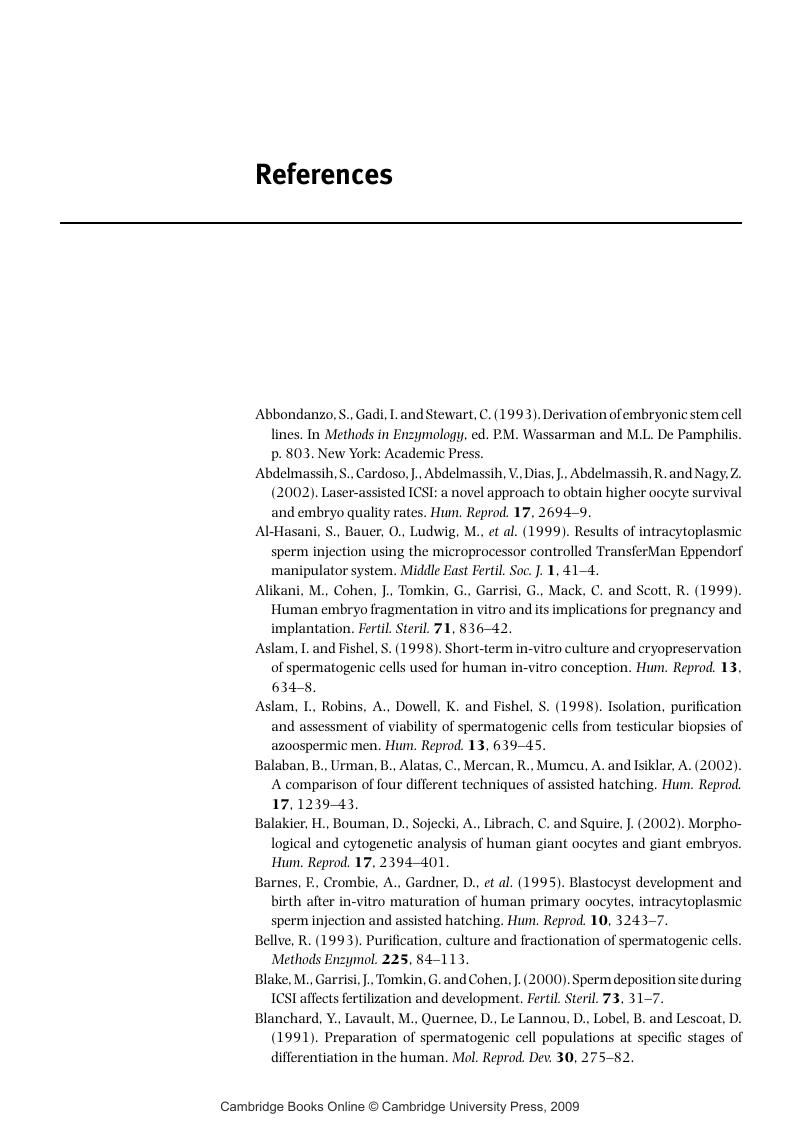Book contents
- Frontmatter
- Contents
- Foreword
- Preface
- Acknowledgements
- Glossary
- List of abbreviations
- 1 Micromanipulation in human assisted conception: an overview
- 2 Media and other consumables for micromanipulation
- 3 Narishige micromanipulation workstation systems
- 4 Eppendorf micromanipulation workstation systems
- 5 Research Instruments micromanipulation workstation systems
- 6 Instrument selection
- 7 Preparation of gametes for micromanipulation
- 8 Intracytoplasmic sperm injection
- 9 Zona manipulation and embryo biopsy
- 10 Microtool manufacture
- 11 Transgenesis and the generation of knock-out mice
- 12 New and advanced techniques
- Appendix: Suppliers and manufacturers of equipment and consumables
- References
- Index
- References
References
Published online by Cambridge University Press: 10 September 2009
- Frontmatter
- Contents
- Foreword
- Preface
- Acknowledgements
- Glossary
- List of abbreviations
- 1 Micromanipulation in human assisted conception: an overview
- 2 Media and other consumables for micromanipulation
- 3 Narishige micromanipulation workstation systems
- 4 Eppendorf micromanipulation workstation systems
- 5 Research Instruments micromanipulation workstation systems
- 6 Instrument selection
- 7 Preparation of gametes for micromanipulation
- 8 Intracytoplasmic sperm injection
- 9 Zona manipulation and embryo biopsy
- 10 Microtool manufacture
- 11 Transgenesis and the generation of knock-out mice
- 12 New and advanced techniques
- Appendix: Suppliers and manufacturers of equipment and consumables
- References
- Index
- References
Summary

- Type
- Chapter
- Information
- Micromanipulation in Assisted Conception , pp. 229 - 240Publisher: Cambridge University PressPrint publication year: 2003



